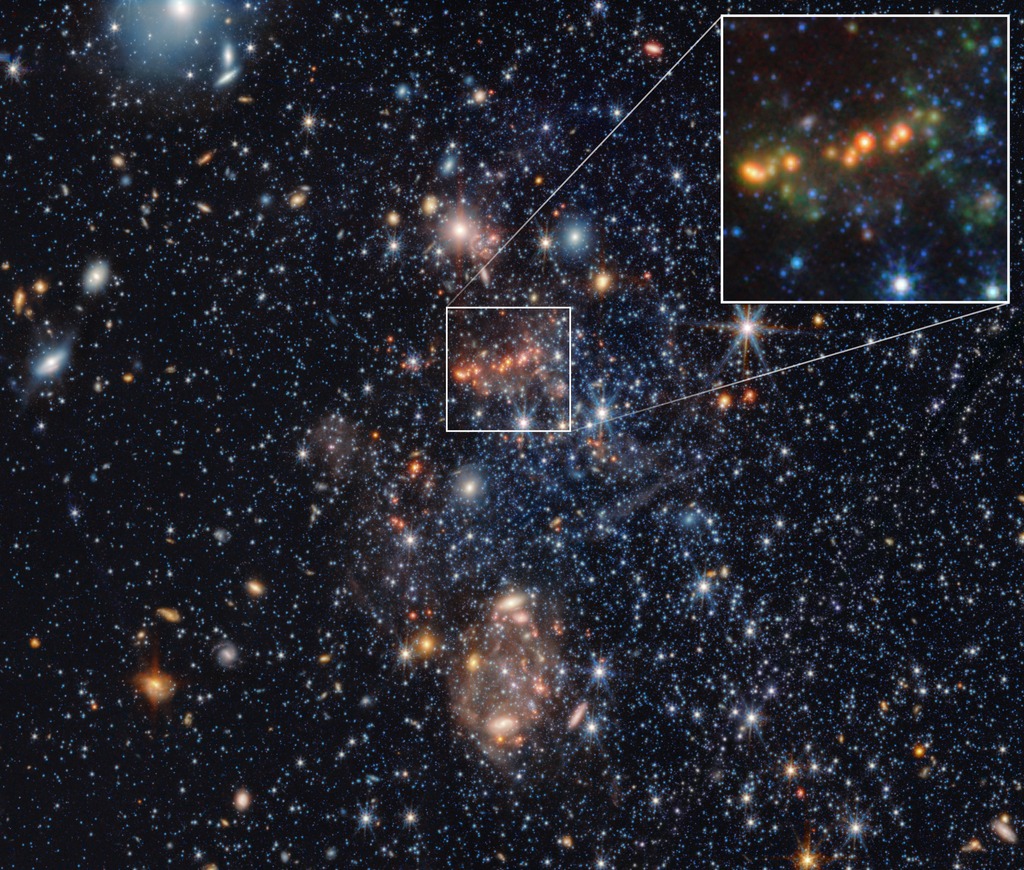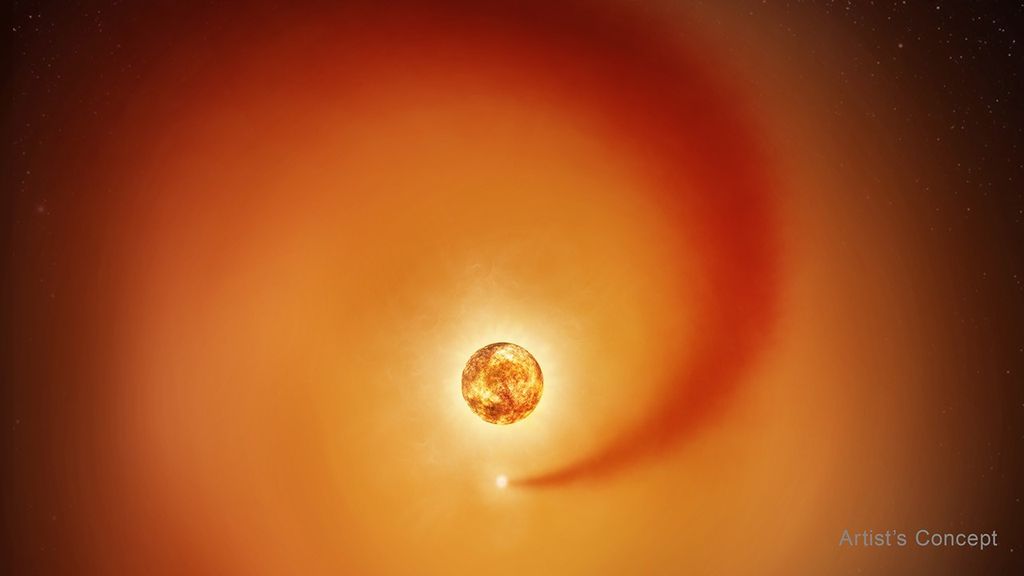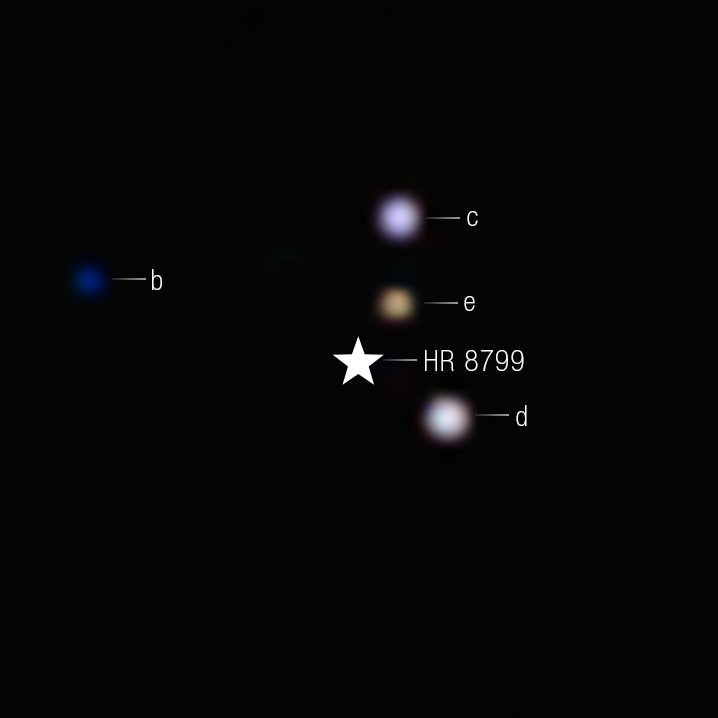1 min read
Young Gas Giant HR 8799 e (NIRCam Spectrum)

This graph shows a spectrum of one of the planets in the HR 8799 system, HR 8799 e, which displays the amounts of near-infrared light detected from the planet by Webb at different wavelengths.
The blue and yellow lines are a best-fit model for an atmosphere that would be either low or high in metals heavier than helium, including carbon, also known as metallicity. The Webb data is consistent with a high metallicity planet.
Spectral fingerprints of carbon dioxide and carbon monoxide appear in data collected by Webb’s NIRCam (Near-Infrared Camera).
About the Object
- R.A. PositionR.A. PositionRight ascension – analogous to longitude – is one component of an object's position.23:07:28.901
- Dec. PositionDec. PositionDeclination – analogous to latitude – is one component of an object's position.+21:08:02.12
- ConstellationConstellationOne of 88 recognized regions of the celestial sphere in which the object appears.Pegasus
- DistanceDistanceThe physical distance from Earth to the astronomical object. Distances within our solar system are usually measured in Astronomical Units (AU). Distances between stars are usually measured in light-years. Interstellar distances can also be measured in parsecs.About 127 light-years away
- Object NameObject NameA name or catalog number that astronomers use to identify an astronomical object.HR 8799e
- Object DescriptionObject DescriptionThe type of astronomical object.Planet in star system HR 8799
- Release DateMarch 17, 2025
- Science ReleaseNASA’s Webb Images Young, Giant Exoplanets, Detects Carbon Dioxide
- CreditIllustration: NASA, ESA, CSA, STScI, Joseph Olmsted (STScI)
Related Images & Videos

51 Eridani (NIRCam Image)
NASA’s James Webb Space Telescope’s NIRCam (Near-Infrared Camera) captured this image of Eridani 51 b, a cool, young exoplanet that orbits 890 million miles from its star, similar to Saturn’s orbit in our solar system. The observations detected the planet is rich in carbon...
Share
Details
Laura Betz
NASA’s Goddard Space Flight Center
Greenbelt, Maryland
laura.e.betz@nasa.gov
NASA, ESA, CSA, STScI, Joseph Olmsted (STScI)



































